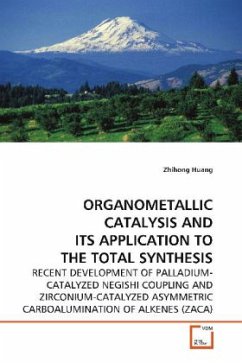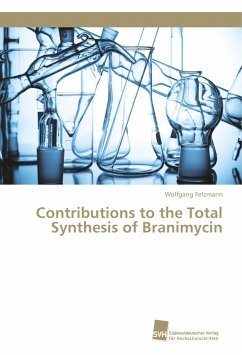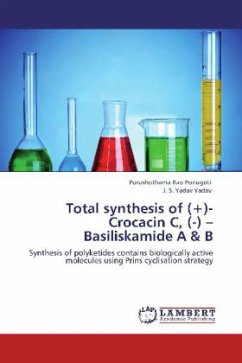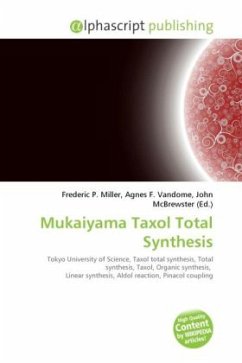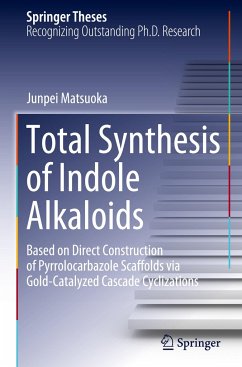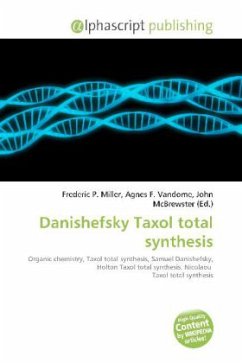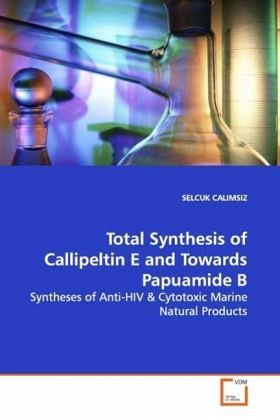
Total Synthesis of Callipeltin E and Towards Papuamide B
Syntheses of Anti-HIV
Versandkostenfrei!
Versandfertig in 6-10 Tagen
39,99 €
inkl. MwSt.

PAYBACK Punkte
20 °P sammeln!
Callipeltins and Papuamides -novel families of cyclicdepsipeptides- were shown to possess potent anti-HIVactivity as well as cytotoxicity against several multidrug resistant cancer cell lines. The novel structural features and diverse biological effects of these peptides metabolites have generated considerable interest among synthetic chemistry groups. In this book, discovery of the lanthanide catalyzed transamidation of Fmoc protected lactams, solid-phase synthesis and configurational reassignment of Callipeltin E, synthesis of N-Fmoc-(2S,3S,4R)-3,4-dimethylglutamine and an efficient method f...
Callipeltins and Papuamides -novel families of cyclic
depsipeptides- were shown to possess potent anti-HIV
activity as well as cytotoxicity against several
multidrug resistant cancer cell lines. The novel
structural features and diverse biological effects
of these peptides metabolites have generated
considerable interest among synthetic chemistry
groups. In this book, discovery of the lanthanide
catalyzed transamidation of Fmoc protected lactams,
solid-phase synthesis and configurational
reassignment of Callipeltin E, synthesis of N-Fmoc-
(2S,3S,4R)-3,4-dimethylglutamine and an efficient
method for the on-resin synthesis and
macrocylization of a simplified Papuamide B model
system are summarized.
depsipeptides- were shown to possess potent anti-HIV
activity as well as cytotoxicity against several
multidrug resistant cancer cell lines. The novel
structural features and diverse biological effects
of these peptides metabolites have generated
considerable interest among synthetic chemistry
groups. In this book, discovery of the lanthanide
catalyzed transamidation of Fmoc protected lactams,
solid-phase synthesis and configurational
reassignment of Callipeltin E, synthesis of N-Fmoc-
(2S,3S,4R)-3,4-dimethylglutamine and an efficient
method for the on-resin synthesis and
macrocylization of a simplified Papuamide B model
system are summarized.



